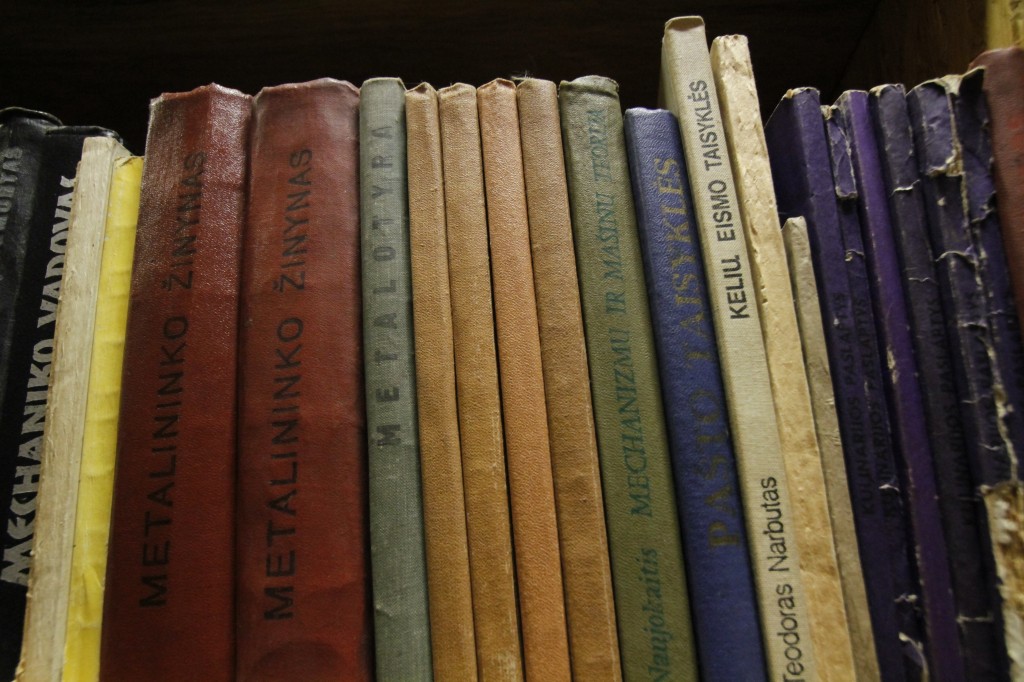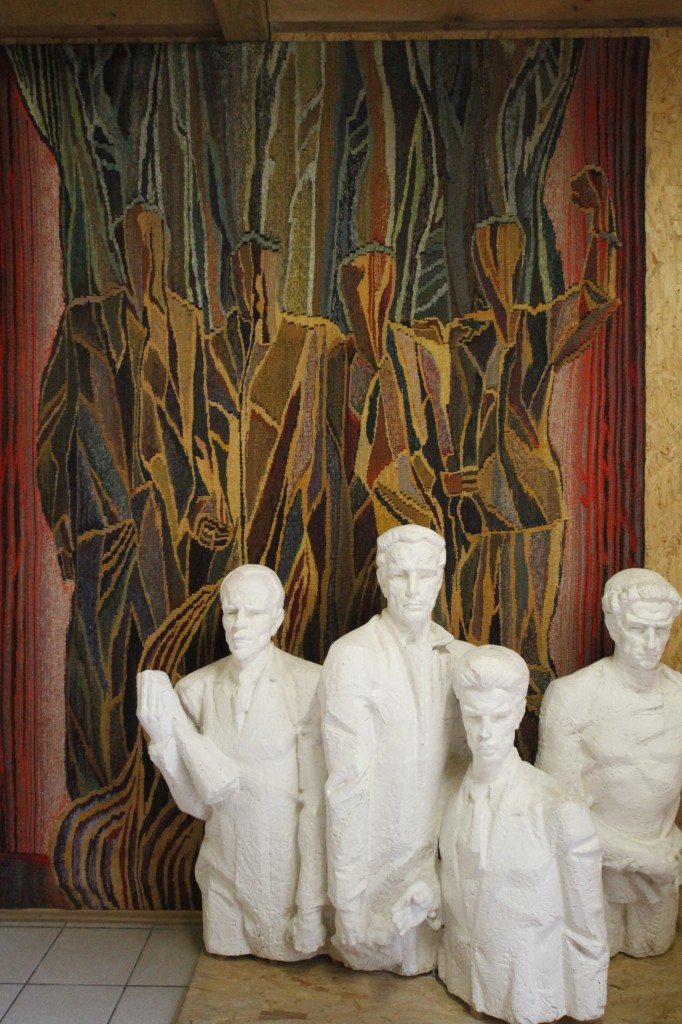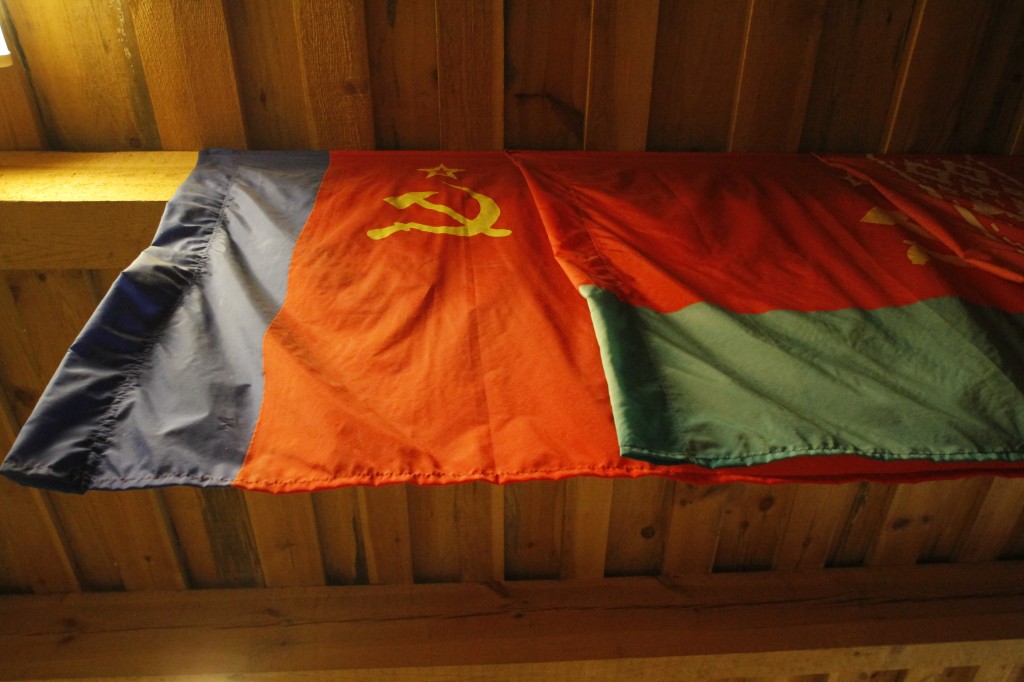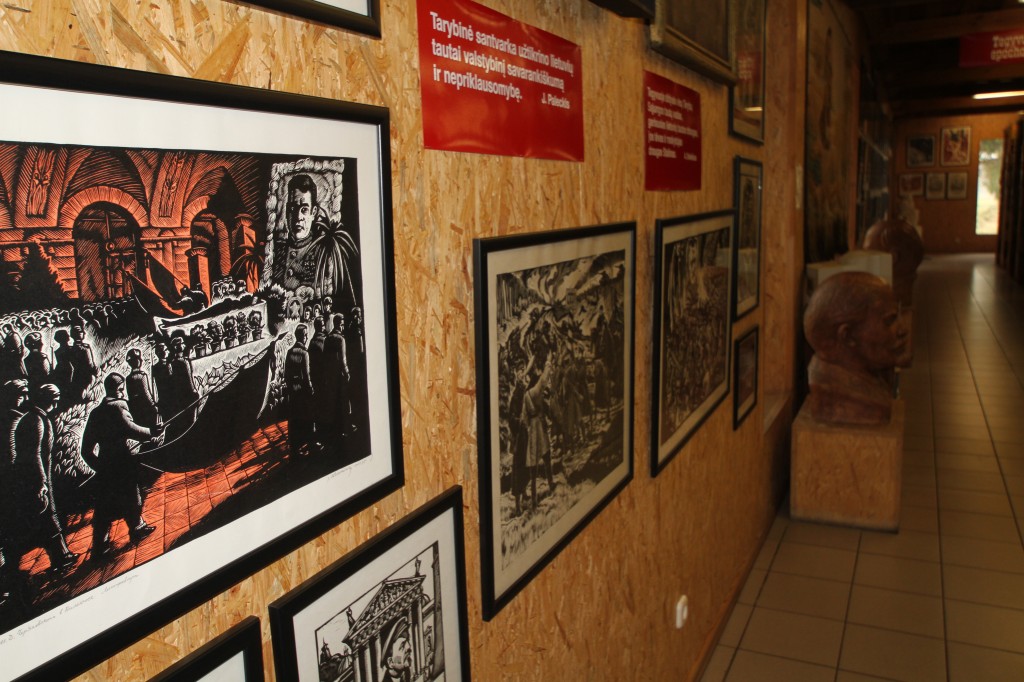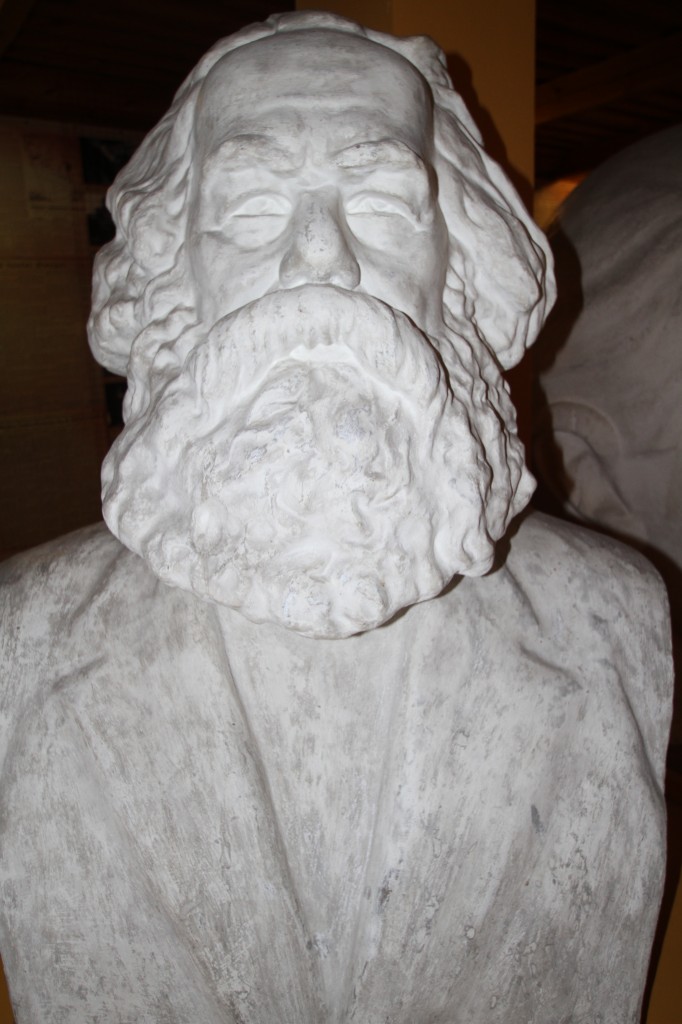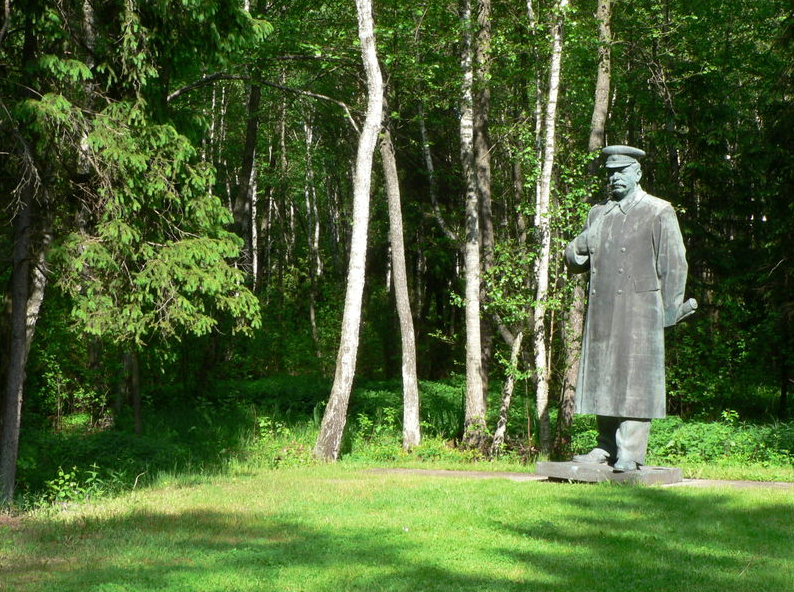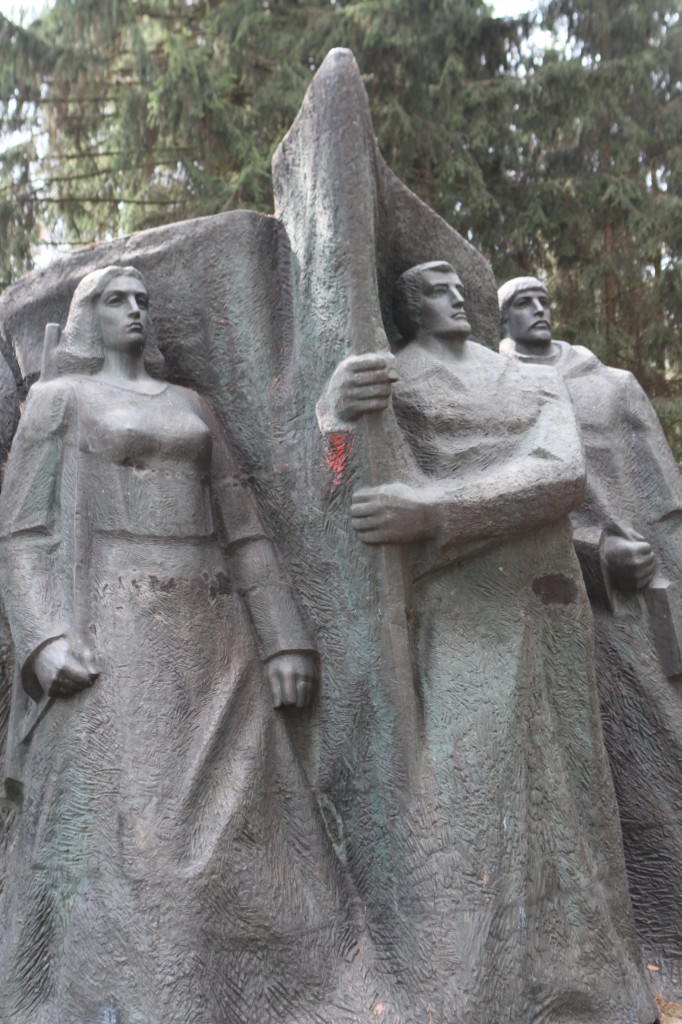Imagine walking into a park that feels like an antiquated Soviet-influenced Disneyland but rather than face statues of Mickey Mouse and Pluto, you’re dished Lenin and Stalin on plates, posters, rugs, paintings and pins. Might I suggest that the word surreal would be mild to describe such an experience, even more than two decades later.
Grutas Park in rural Lithuania, spans 20 hectares and houses one of the world’s 10 strangest museums. Referred to as a Social Realism Museum by some and by its founder Viliumas Malinauskas “Stalin’s World,” it boasts more than 50 statues of Soviet political leaders. The park is divided between a traditional museum structure with rooms filled with equipment, weapons, art, posters and sculptures and an open air park which shows off statues of Soviet leaders that for many years, “decorated” squares in Lithuanian cities. You can climb up on the observation towers or go down into the concentration camp-like trenches.
The museum itself is near the small Lithuanian resort town Druskininkai which is so small, it’s easy enough to miss. Westerners don’t flock to the area for the nearby resort however, but for this unusual experience of statues, emblems, newspapers, reports, books, flags, photos and drawings from Soviet times. There’s even a massive floor rug with Stalin plastered on it, which is sure to give you a hiccup if you’re not expecting it. As one of the signs read when you enter: “Welcome to the territory of eternal social realism!” Indeed. Take a meander with me into a world that may feel eternal but not necessarily all that real.
Books on shelves line the interior of one of of the museum rooms, whereas the outskirts present paintings, flags, newspaper articles and photos, public announcements, posters, honorary military medals and sculptures of men who spent more time saluting and obeying than living their lives.
Before you enter the museum, you’re taken down a narrow path which passes an old weathered and rusted dark green train. Freight cars. A massive statue. A woman on a bench eating a sandwich with her dog. Entrance to a massive room. Colorful tapestries with more statues.
It’s a bit dizzying at first. The Soviet red oozes its way into every corner. Signs of its bureaucratic past, its corruption, its life of gray and black, its communism tentacles squeezing the life out of you as you recall painful histories and deaths.
Salut, Salut….
Paintings, drawings, sketches, charcoals. Lenin as a boy, a teenager, an adult, a soldier, a master. Other infamous and not so infamous leaders loyal to the “Party” plaster the room’s walls.
Salut Salut.
I remember young men trading flags such as this one on the Black Market in Moscow in the mid-eighties. They’d come up with anything to get their paws on jeans, books and stockings for their girls.
If only I had weeks to read these walls and the language skills for it to all make sense. This museum is a paradise for anyone into history, Marxism, or the former Soviet world. And, how’s this for beyond surreal after you’ve finished with his teenage drawings – there’s actually a miniature of Lenin’s father’s house….something perhaps you’d like to replicate and give to your son?
The Mother Kryzhkalnis sculpture symbolizes the Red Army that “brought liberation from bourgeois nationalism.” As the story goes, it was apparently created for the Russian city of Alekseyev, but the local communists rejected the gift because it wasn’t Russian enough. The amount of loyalty without an inch of deviation to spare, was astonishing. If you didn’t obey, off you went to Siberia. Because it was too un-Russian, the Mother Kryzhkalnis sculpture remained in Lithuania, like so many of the other sculptures brought from Lithuanian town squares which are now scattered throughout Grutas Park.
Since I have always been intrigued by flags, I was taken in by the Soviet republic flags (they had all of them), that were on display at the museum’s Civic House. In fact, I adorned myself in a couple of them, an image that none of my travel companions saw for you can’t explain your interest in a juxtaposition the world to anyone. Imagine the combination of the “loud” Soviet red on every flag and poster in a room next to a hallway overflowing with busts of Lenin, Stalin and Dzerzhinsky? If that weren’t enough, add a display of model cars dedicated to the infamous Volga and Moskvich brands so popular at the time, and endless books in a language so far from your own you dare open the first page.
Outside the museum’s ‘walls’, the open door museum begins. You are led along a paved narrow path with signs and statues surrounding you, all with a story of their place in Soviet and Lithunian history. Once Lithuania finally took its independence back in 1990, Soviet statues were taken down for obvious reasons.
I asked our guide. “Who’s here? How did one get chosen to be displayed in this bizarre Communist Disneyland park?” Malinauskas requested that the Lithuanian authorities allow him to collect and curate the sculptures they could find to be assembled in a privately funded museum. As for the “who?” Most were ideologists, Marxists, Party loyalists, army leaders or part of the KGB. Some were Lithuanian leaders, others Soviets….some educated locally, others in Moscow. Executed as an example in 1926 was the sculpture of the four young communists: One Jew, One Russian, One Pole & One Lithuanian.
Alas, there were over 90 to view…
The entrance fee to the museum is 20 Lithuanian litas or around $7.60 at the time of writing this post.
Note: The tour was hosted by the Lithuanian Tourism Board but opinions expressed here are entirely my own.

Renee Blodgett is the founder of We Blog the World. The site combines the magic of an online culture and travel magazine with a global blog network and has contributors from every continent in the world. Having lived in 10 countries and explored over 90, she is an avid traveler, and a lover, observer and participant in cultural diversity. She is also the founder of the Magdalene Collection, a jewelry line dedicated to women’s unsung voices and stories, and the award-winning author of the bestselling book Magdalene’s Journey
She is founder of Blue Soul Media and co-founder of Blue Soul Earth as well as the producer and host of the award-winning Blue Soul CHATS podcast, that bridges science, technology and spirituality. Renee also founded Magic Sauce Media, a new media services consultancy focused on viral marketing, social media, branding, events and PR. For over 20 years, she has helped companies from 12 countries get traction in the market. Known for her global and organic approach to product and corporate launches, Renee practices what she pitches and as an active user of social media, she helps clients navigate digital waters from around the world. Renee has been blogging for over 16 years and regularly writes on her personal blog Down the Avenue, Huffington Post, BlogHer, We Blog the World and other sites. She was ranked #12 Social Media Influencer by Forbes Magazine and is listed as a new media influencer and game changer on various sites and books on the new media revolution. In 2013, she was listed as the 6th most influential woman in social media by Forbes Magazine on a Top 20 List.
Her passion for art, storytelling and photography led to the launch of Magic Sauce Photography, which is a visual extension of her writing, the result of which has led to producing six photo books: Galapagos Islands, London, South Africa, Rome, Urbanization and Ecuador.
Renee is also the co-founder of Traveling Geeks, an initiative that brings entrepreneurs, thought leaders, bloggers, creators, curators and influencers to other countries to share and learn from peers, governments, corporations, and the general public in order to educate, share, evaluate, and promote innovative technologies.

